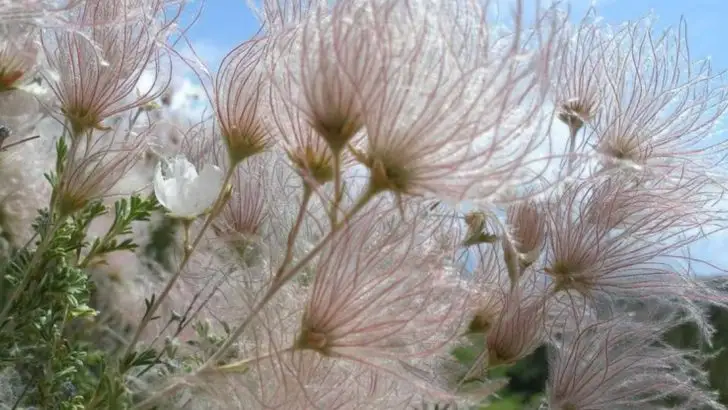Think your garden can’t survive the scorching Rocky Mountain summers? Think again. While the sun blazes and the air dries out, there are shrubs that not only survive—they thrive. These 21 drought-tolerant shrubs are the secret to creating a lush, sustainable landscape that can handle the tough Rocky Mountain climate. From the harsh heat to the unpredictable rainfall, these resilient plants have evolved to withstand it all. They’ll give your garden the texture, color, and life it deserves, without the constant battle for water. Wave goodbye to thirsty plants and welcome these hardy shrubs that are as tough as the terrain they grow in. Ready to transform your garden into a drought-proof haven? The solution is right here.
Apache Plume
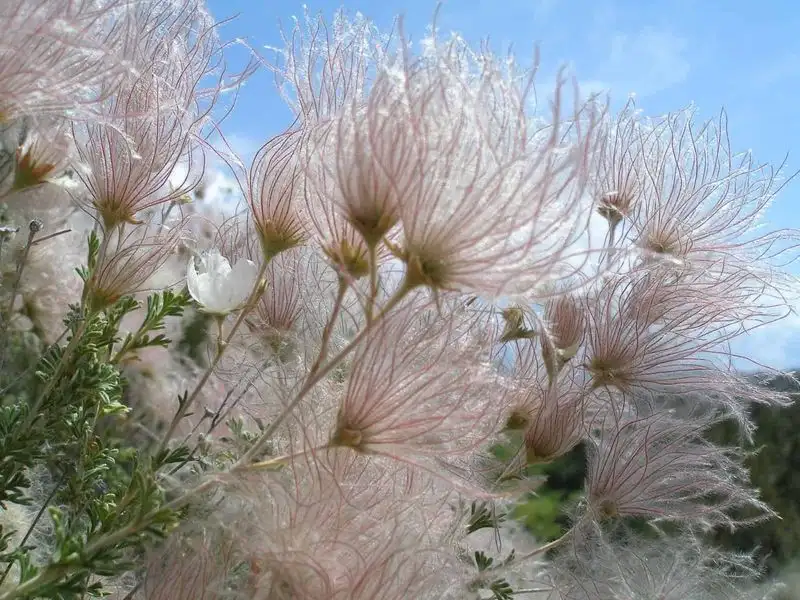
Apache Plume offers a delicate beauty, gracing the rugged terrains with its charming white blooms. As the flowers fade, soft, feather-like plumes emerge, adding a whimsical touch to the landscape. These plumes, backlit by the sun, create a mesmerizing display that captivates the eye.
Native to the southwestern regions, this shrub thrives in well-drained soils, making it a perfect candidate for rocky environments. Its ability to withstand dry spells is impressive, ensuring a vibrant presence throughout the summer. If you’re seeking a shrub that combines elegance and resilience, Apache Plume is an excellent choice.
Fun fact: Its name is derived from the unique feather-like seed heads that resemble the ceremonial plumes worn by Apache warriors.
Big Sagebrush
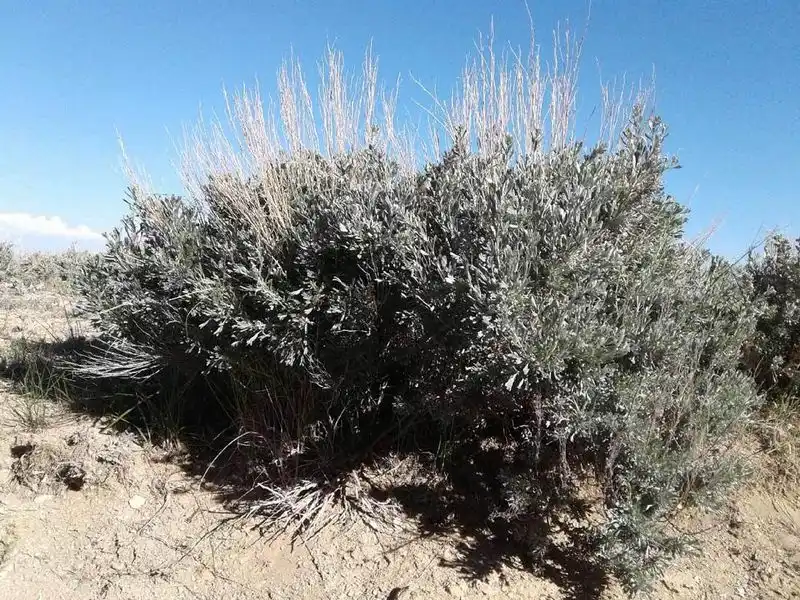
Big Sagebrush, with its iconic silvery leaves, stands as a symbol of the American West. This shrub’s aromatic foliage releases a crisp, refreshing scent, especially after a summer rain. Its adaptability to rocky, dry soils makes it a quintessential component of the Rocky Mountain flora.
The Big Sagebrush doesn’t just survive; it thrives despite harsh conditions, providing shelter and food for local wildlife. It’s a plant of resilience, embodying the spirit of the mountains it calls home. For those looking to add a touch of the wild west to their garden, this shrub is a hardy contender.
Did you know? This shrub plays a crucial role in its ecosystem, supporting a diverse range of wildlife, from insects to birds.
Cheyenne Mock Orange
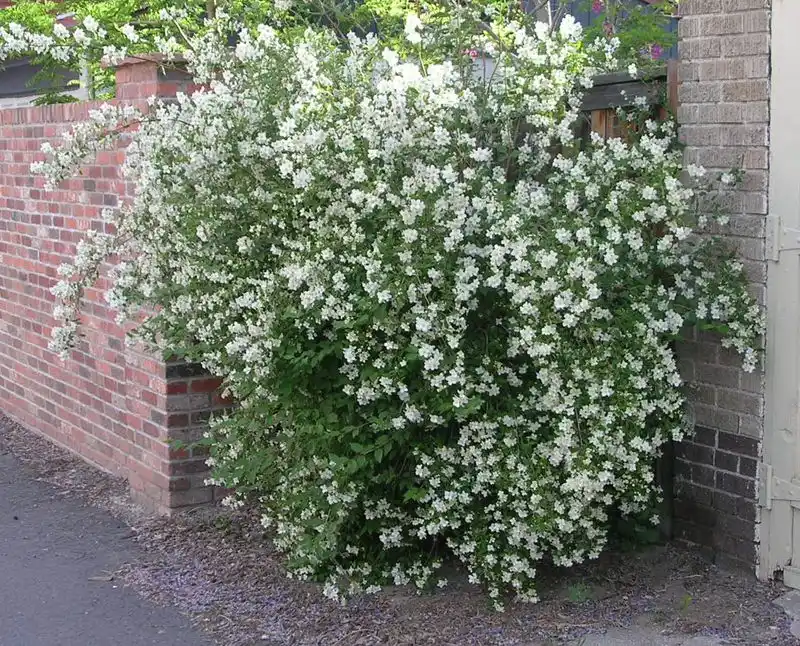
Cheyenne Mock Orange is a delightful addition to any garden, known for its clusters of fragrant white flowers that bloom in early summer. The scent, reminiscent of orange blossoms, fills the air, creating a sweet, inviting atmosphere.
This shrub not only graces gardens with its beauty but also its robustness. It’s well-suited for rocky, dry conditions, requiring minimal water once established. Its lush green foliage offers a verdant contrast to its surroundings, making it a visual treat.
If you’re seeking a shrub that combines olfactory delight with visual appeal, Cheyenne Mock Orange is an excellent choice. Plus, its low maintenance makes it a gardener’s friend.
Curl Leaf Mountain Mahogany
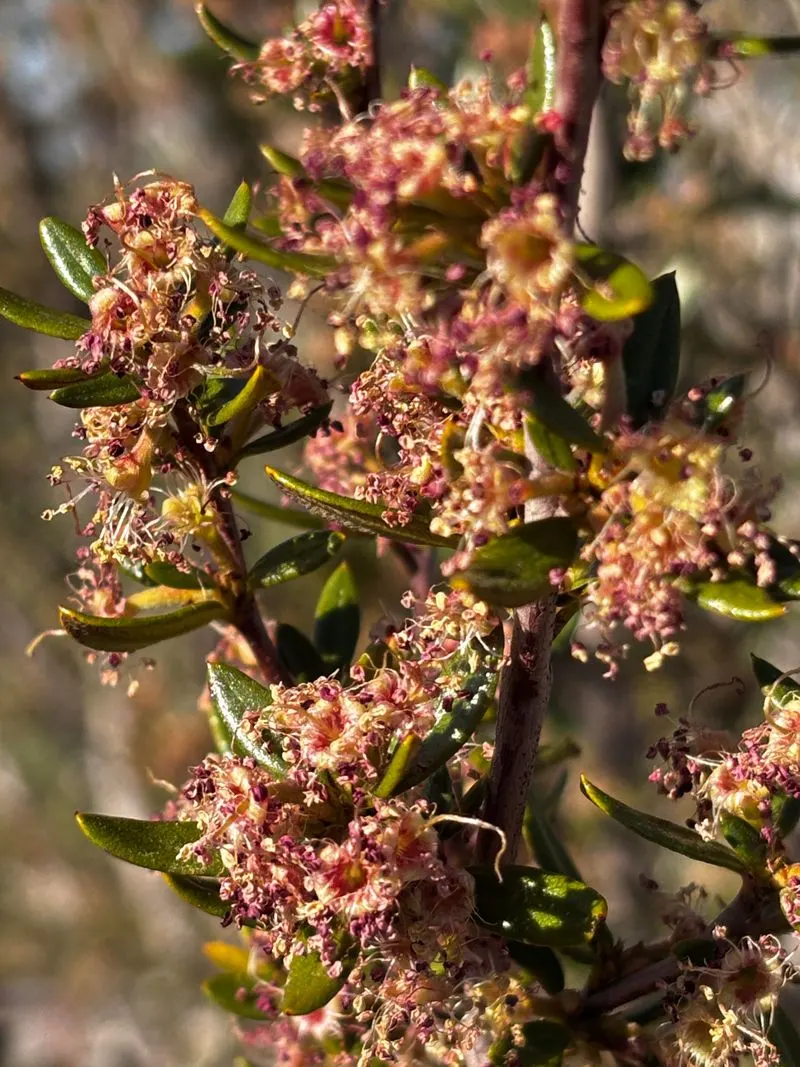
Curl Leaf Mountain Mahogany is a unique shrub that captures the rugged essence of the Rocky Mountains. Its dense, twisted branches and small, leathery leaves give it a distinctive appearance, standing resilient against the harsh mountain climate.
This hardy plant thrives in rocky, well-drained soils, providing an excellent choice for xeriscaping. Its ability to survive drought conditions without losing its verdant beauty is remarkable. Curl Leaf Mountain Mahogany serves both functional and aesthetic purposes, offering a natural habitat and food source for wildlife.
A fascinating tidbit: Native American tribes historically used its wood for crafting tools due to its strength and durability.
Rabbitbrush

Rabbitbrush, with its vibrant yellow flowers, brings a splash of color to the rocky terrains during the late summer months. This hardy shrub is well-adapted to the dry, challenging climates of the Rocky Mountains, thriving where other plants may falter.
Its ability to withstand prolonged dry spells makes it a staple in drought-prone areas. The bright blooms attract various pollinators, contributing to the local ecosystem’s health. Rabbitbrush is not just a survivor but a beacon of resilience and beauty.
Interesting fact: Rabbitbrush was historically used by Native Americans to produce a yellow dye for textiles, showcasing its versatility beyond ornamental use.
Mountain Snowberry
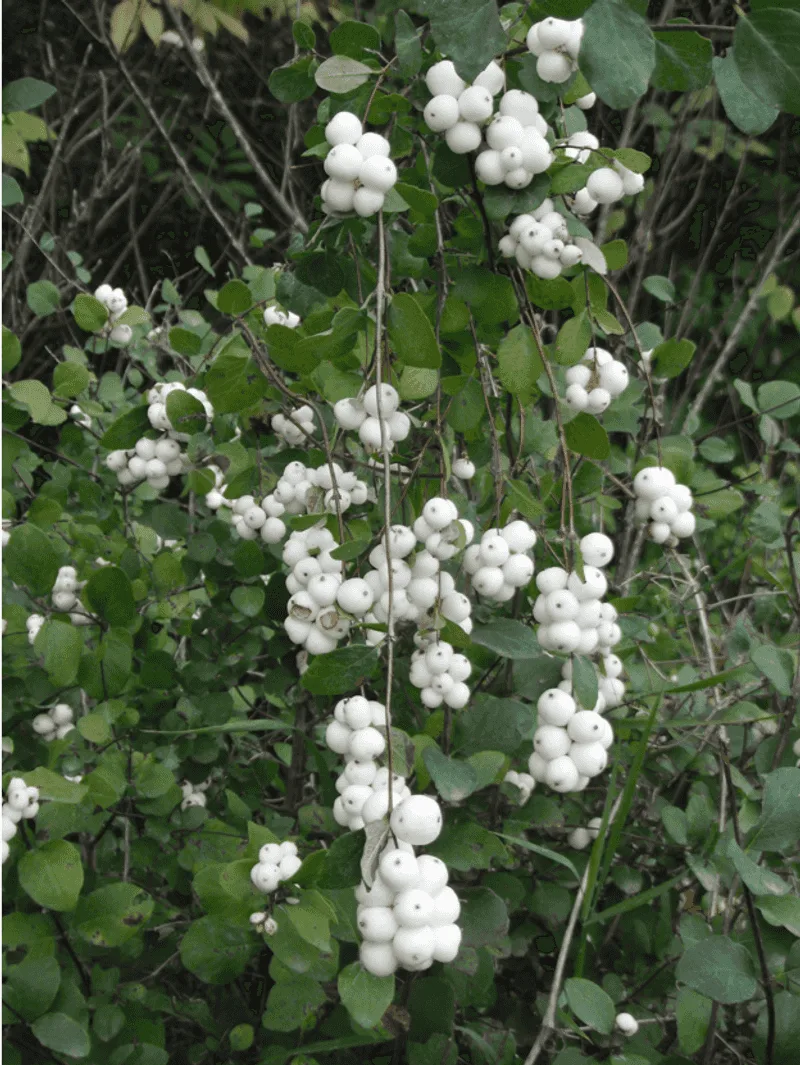
Mountain Snowberry adds a touch of elegance to the rocky landscapes with its clusters of small, white berries surrounded by dark green foliage. These berries persist through summer, providing a visual feast for both humans and wildlife.
This shrub is a master of survival, thriving in rocky, well-drained soils with minimal water. It’s an excellent choice for those looking to attract birds and butterflies to their gardens. Mountain Snowberry’s delicate beauty and hardiness make it a valuable addition to any landscape.
Fun tidbit: The berries, although not particularly palatable to humans, are a favorite among various bird species, offering a natural food source in the wild.
Red Twig Dogwood
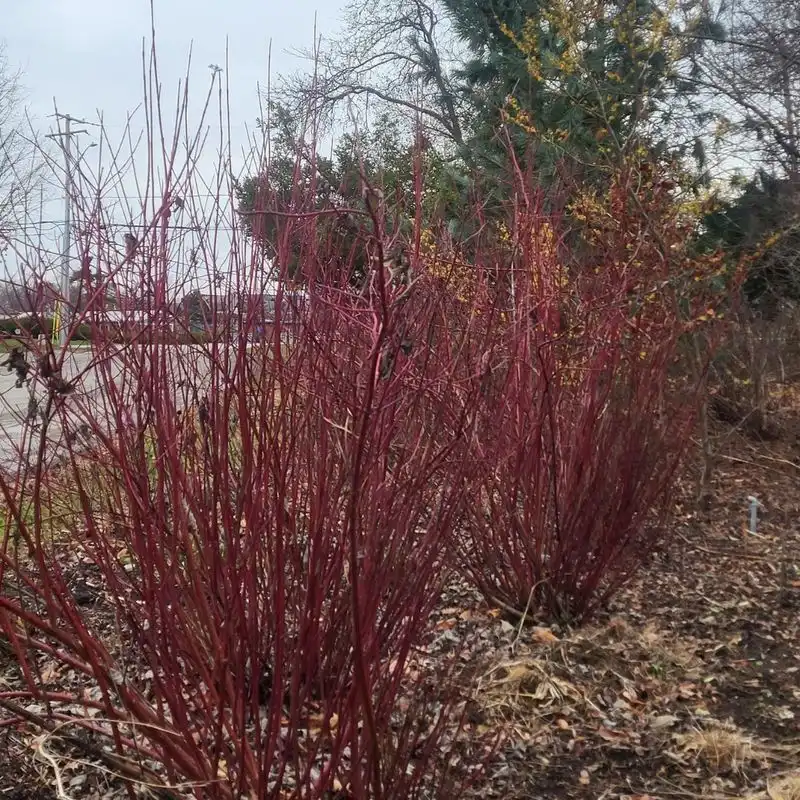
Red Twig Dogwood, with its striking red branches, offers a dramatic contrast against the rocky landscapes of the Rockies, especially in winter. During summer, it produces clusters of white flowers, adding to its visual appeal.
Its adaptability to various soil types, including rocky terrains, makes it a versatile choice for gardeners. Besides its beauty, this shrub supports local wildlife, providing food and shelter. Red Twig Dogwood is not just about aesthetics; it’s about creating a thriving ecosystem.
Did you know? The vibrant red stems are often used in decorative arrangements, bringing a touch of nature into homes during the cooler months.
Wax Currant
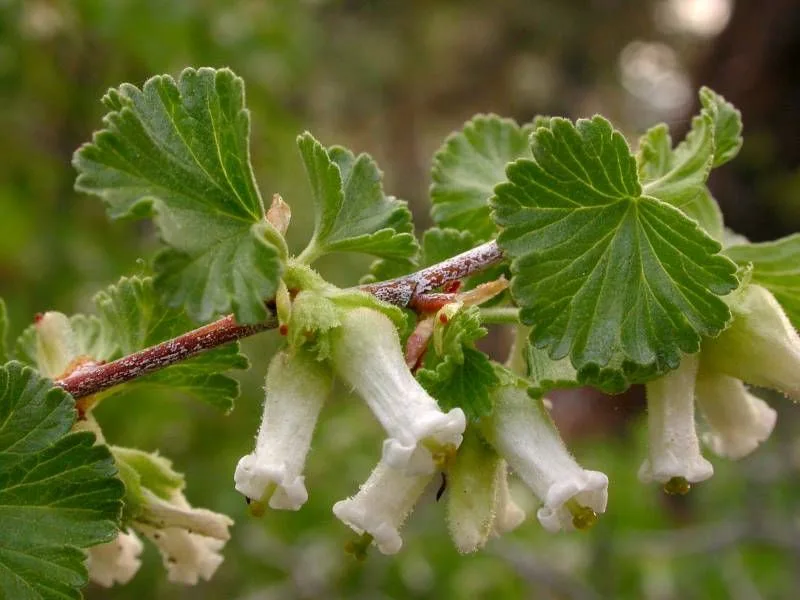
Wax Currant, adorned with glossy green leaves and vibrant red berries, is a visual delight in rocky surroundings. The berries, ripening in late summer, provide a feast for birds and other wildlife, contributing to the ecological balance.
This shrub’s ability to thrive in dry, rocky soils is impressive, requiring minimal water once established. It’s an excellent choice for those seeking to create a wildlife-friendly garden. Wax Currant’s beauty and resilience make it a standout in any landscape.
Interesting note: The berries have been traditionally used by indigenous peoples for making jams and jellies, showcasing their versatility beyond ornamental purposes.
Serviceberry
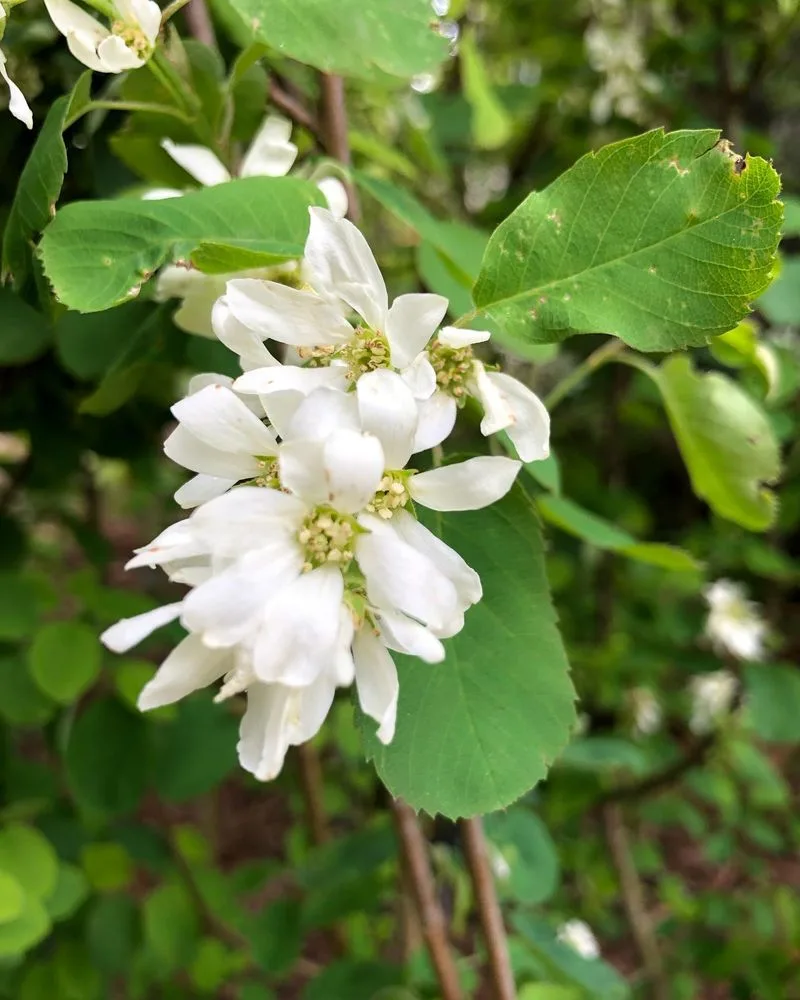
Serviceberry, with its elegant clusters of white flowers, graces the rocky hillsides in early summer. These blossoms are followed by dark purple berries, adding both beauty and functionality as they serve as a food source for wildlife.
Adapted to rocky soils, this shrub thrives with minimal care, offering a striking visual appeal throughout the seasons. It’s a favorite among those looking to add a touch of the wild to their gardens. Serviceberry is not just about beauty; it’s about harmonizing with nature.
Did you know? The berries are edible for humans too and can be used in pies and preserves, offering a delicious taste of the wild.
Fernbush
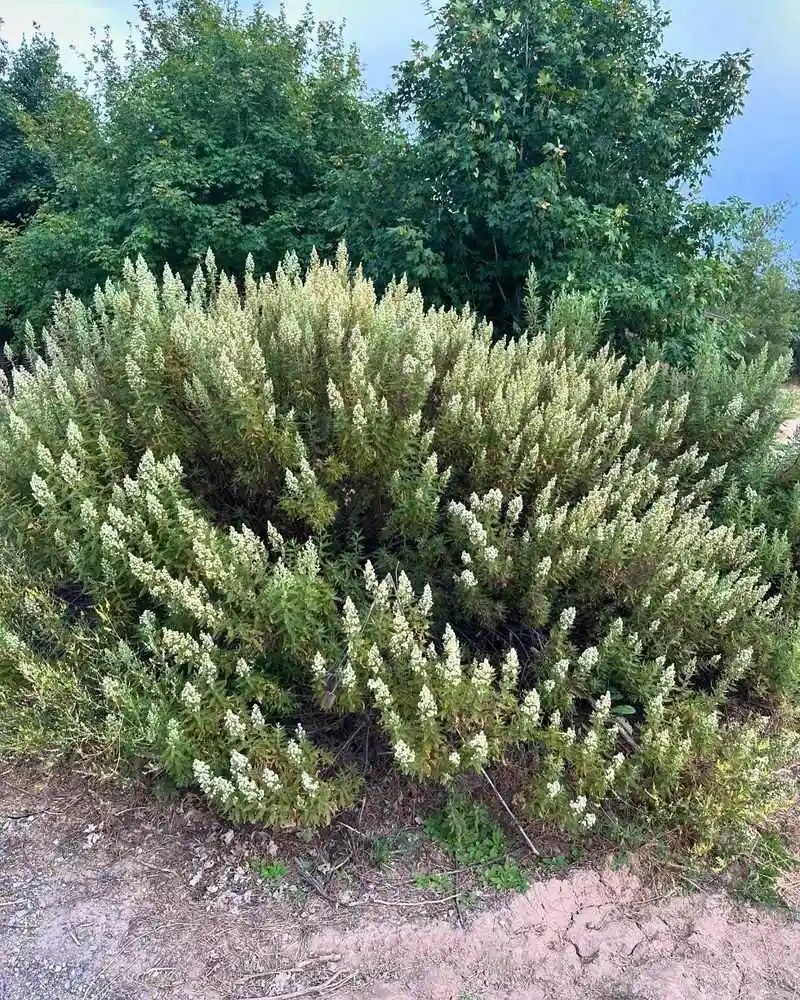
Fernbush, with its fern-like foliage and delicate white flowers, brings a touch of elegance to the rugged mountainous terrain. As a drought-tolerant shrub, it thrives in rocky, well-drained soils, making it a perfect fit for the Rockies.
Its aromatic leaves release a pleasant scent, adding another sensory dimension to your garden. Fernbush is a magnet for pollinators, enhancing the biodiversity of any landscape. This shrub combines beauty and utility seamlessly.
Fun fact: Known as “False Box,” Fernbush leaves were once used by Native Americans to brew a tea-like beverage, showcasing its multifaceted nature.
Gambel Oak
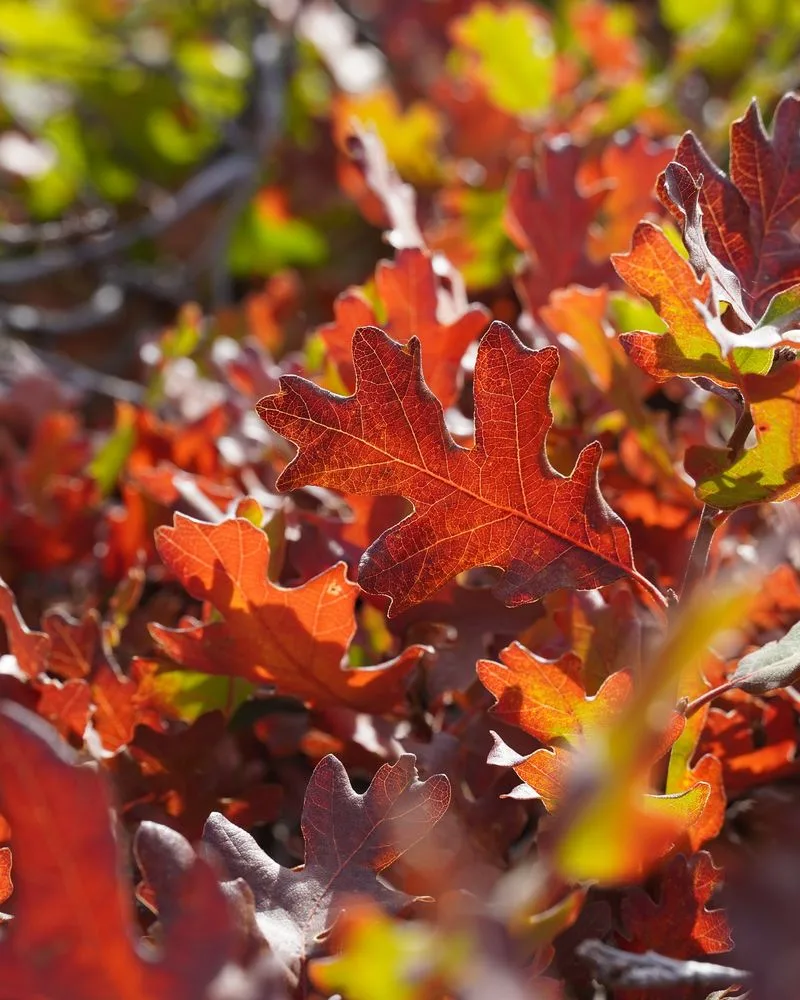
Gambel Oak, often referred to as the “Rocky Mountain White Oak,” forms sprawling thickets that provide shelter and sustenance for many species. Its broad, lobed leaves turn a golden hue in autumn, painting the mountainsides with warmth.
This resilient shrub thrives in rocky, well-drained soils, requiring little water once established. Gambel Oak’s acorns are a vital food source for wildlife, making it an important ecological component. Its robust nature and aesthetic appeal make it a favorite among gardeners.
Did you know? Gambel Oak wood was historically used by settlers for building and as fuel, highlighting its practicality.
Western Sand Cherry
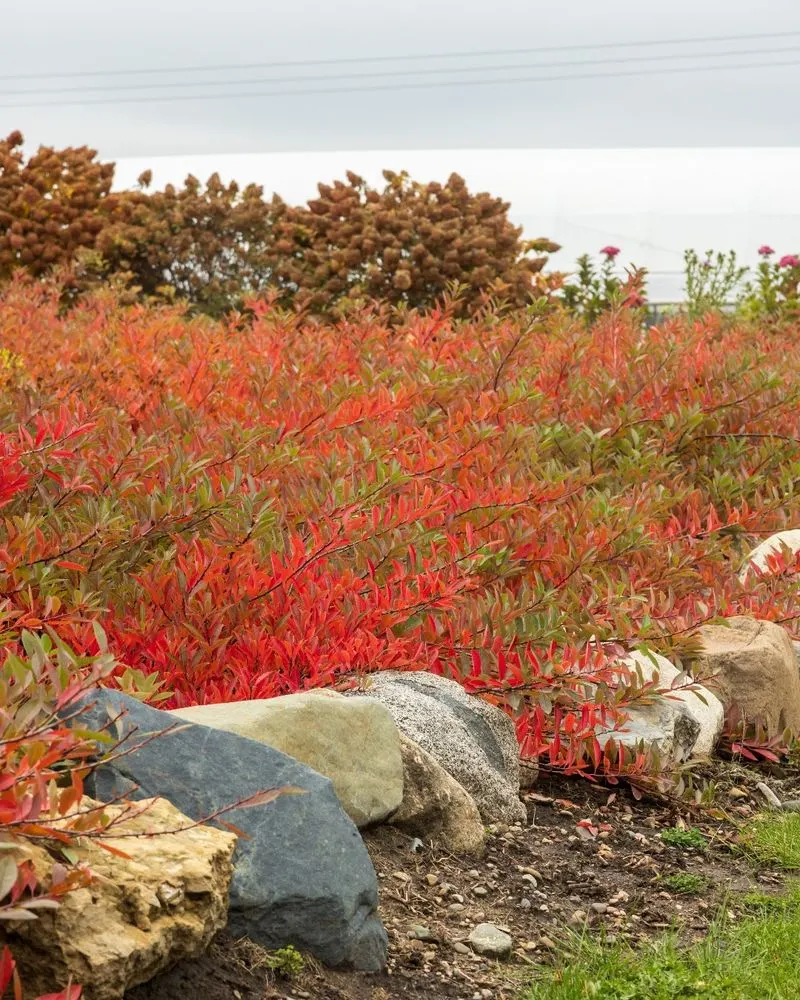
Western Sand Cherry, with its fragrant white flowers and purple-black fruit, is a delightful addition to rocky landscapes. This low-growing shrub is not only ornamental but also functional, providing food for birds and other wildlife.
Its hardiness to dry, rocky conditions makes it a perfect candidate for xeriscaping. The vibrant colors and appealing aroma add a sensory delight to any garden setting. Western Sand Cherry is a celebration of beauty and resilience.
Interesting tidbit: The fruit of the Western Sand Cherry is edible for humans and can be used in various culinary applications, offering a taste of the wild.
Antelope Bitterbrush
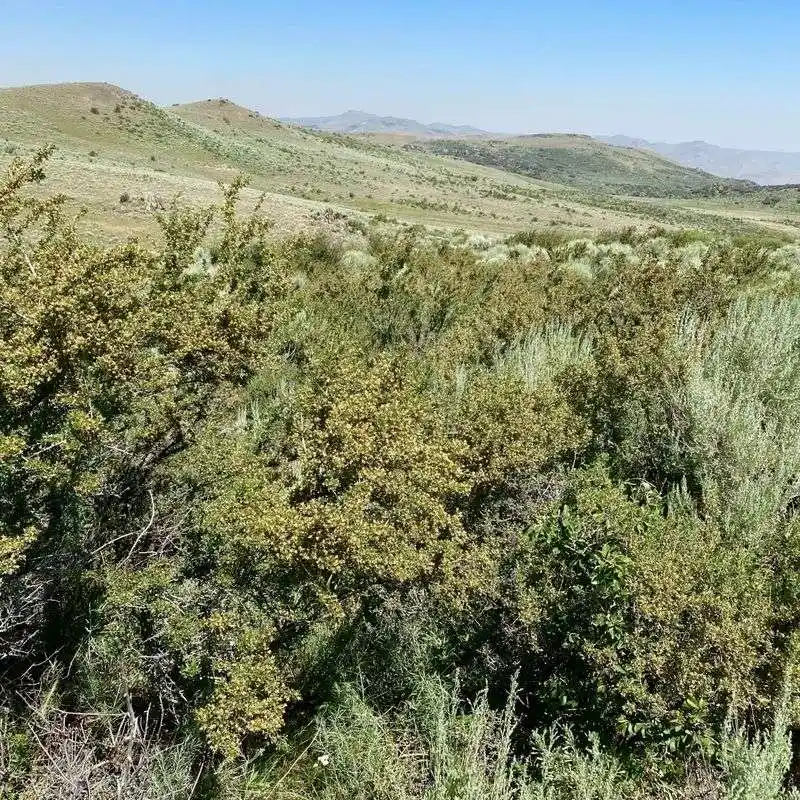
Antelope Bitterbrush, with its silvery green foliage and yellow flowers, stands as a testament to nature’s resilience. Its ability to thrive in rocky, arid environments makes it a staple of the Rocky Mountain flora.
This drought-tolerant shrub is highly valued for its role in the ecosystem, providing food and habitat for various wildlife species. Its understated beauty and functional purpose make it a compelling addition to any landscape.
Did you know? Antelope Bitterbrush is named for its significance as a food source for antelope and other wild animals, underscoring its ecological importance.
Snowbrush Ceanothus
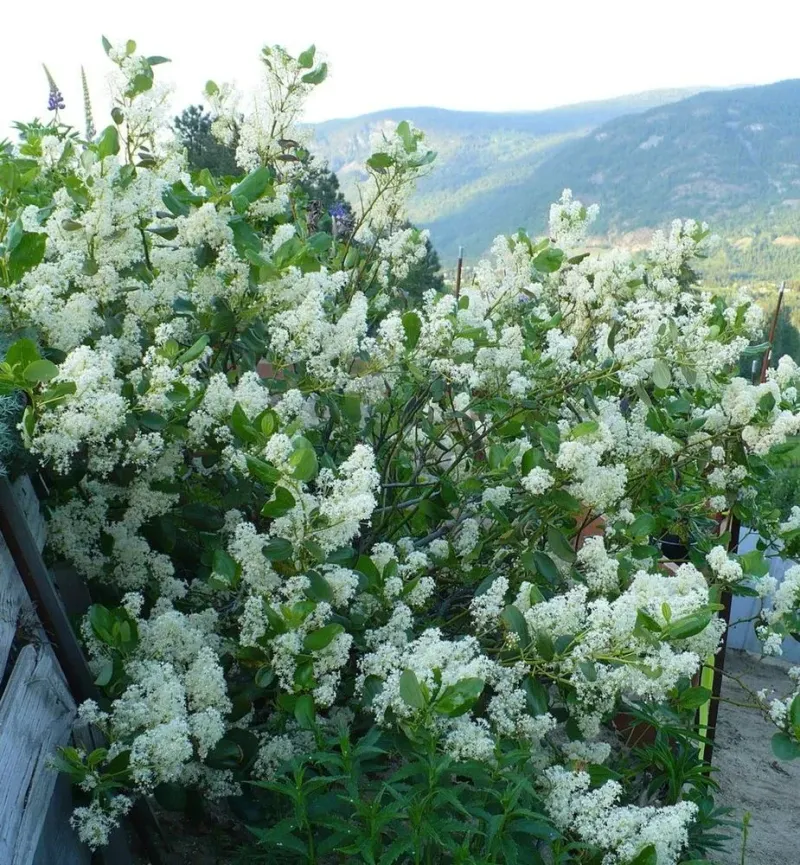
Snowbrush Ceanothus, with its clusters of fragrant white flowers, adds a touch of elegance to rocky terrains. The shiny green leaves compliment the blossoms, creating a lush visual tapestry.
This shrub thrives in well-drained, rocky soils, showcasing its drought-tolerant nature. Snowbrush Ceanothus supports local ecosystems by providing habitat and nectar for various pollinators. It’s a perfect blend of beauty and ecological utility.
Fun fact: This shrub’s nitrogen-fixing ability enriches the soil, demonstrating its role in sustaining its environment beyond mere aesthetics.
Chokecherry
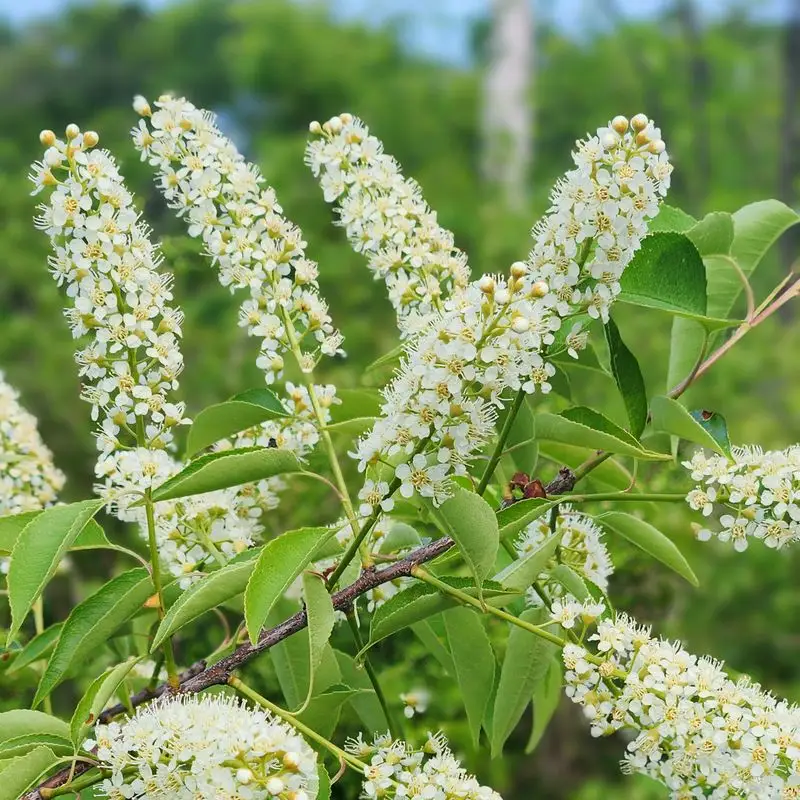
Chokecherry, with its clusters of small red cherries, adds both beauty and functionality to any rocky landscape. This shrub is not only ornamental but also serves as a food source for wildlife and humans alike.
Adapted to dry, rocky soils, Chokecherry requires minimal maintenance, making it a favorite for those seeking a low-maintenance garden. Its vibrant berries and lush foliage offer visual appeal throughout the seasons.
Did you know? Chokecherries were historically used by Native American tribes to make pemmican, a traditional food offering sustenance over long winters.
Skunkbush Sumac
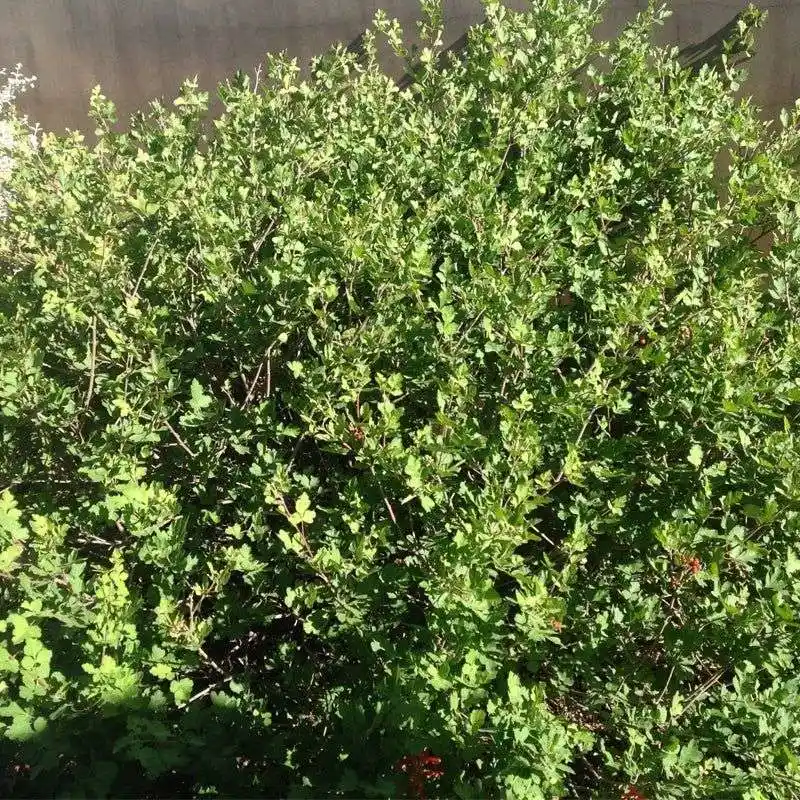
Skunkbush Sumac, with its trifoliate leaves and clusters of red berries, is an eye-catching addition to any rocky landscape. Its vibrant colors and unique form make it stand out among the rugged terrain.
Highly drought-tolerant, this shrub thrives in arid conditions, requiring little water once established. Skunkbush Sumac’s berries are not only ornamental but also provide food for local wildlife.
Interesting tidbit: The berries can be used to make a tart, lemonade-like drink, showcasing their versatility beyond mere decoration.
Wood’s Rose
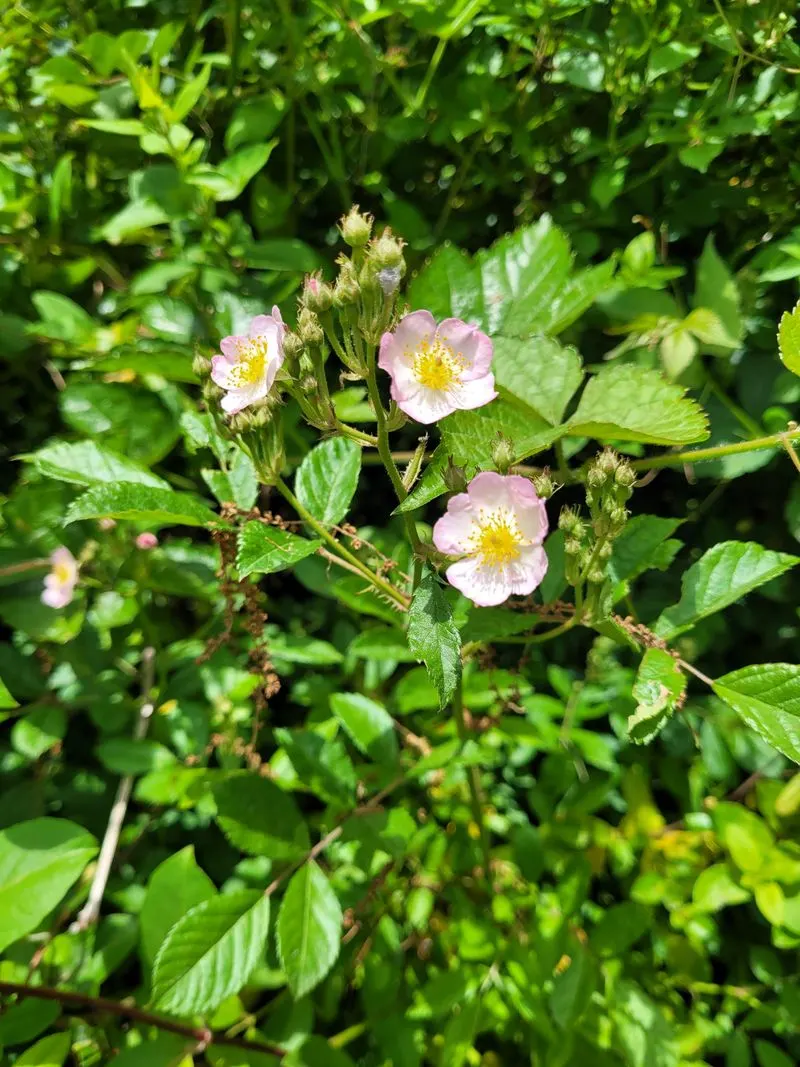
Wood’s Rose, with its lovely pink blooms, adds a splash of color to the rocky terrains of the Rockies. This hardy shrub thrives in well-drained, rocky soils, bringing beauty where you least expect it.
The thorny branches provide shelter for small animals, while the rose hips offer a food source for birds in winter. Wood’s Rose is not just about aesthetic appeal; it’s about supporting the ecosystem.
Did you know? The rose hips are rich in vitamin C and have historically been used to make jellies and teas, highlighting their nutritional value.
Cliffrose
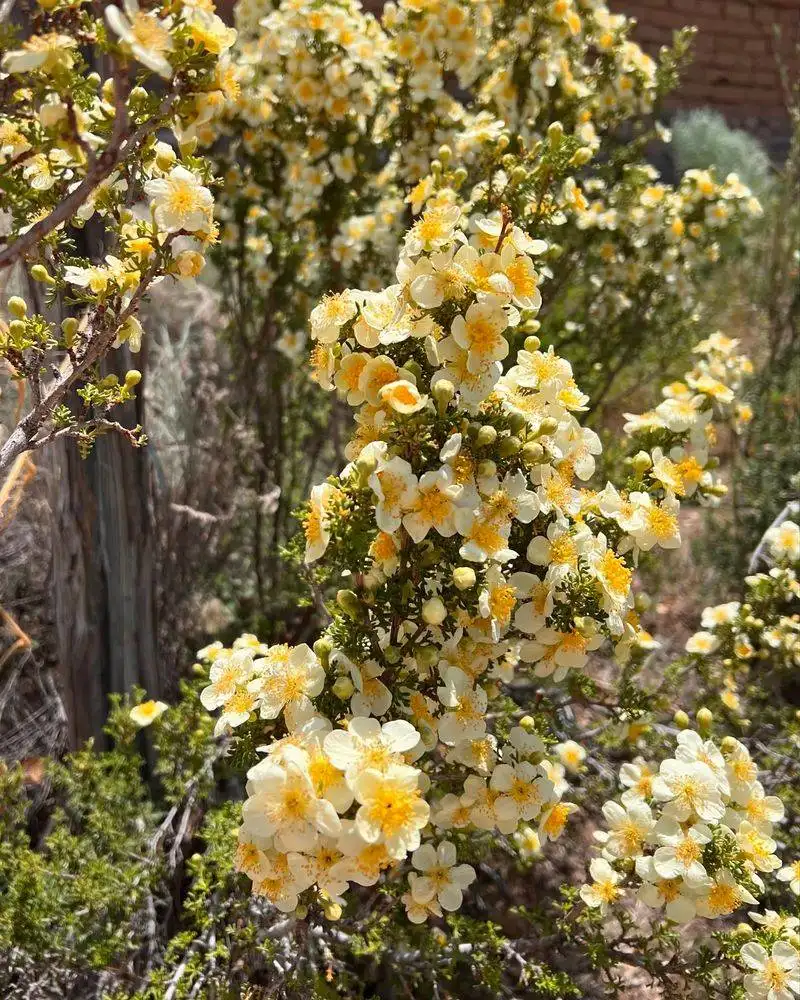
Cliffrose, with its creamy white flowers and twisted branches, is a captivating sight against the rocky cliffs it often inhabits. This shrub’s ability to survive in dry, rocky environments is nothing short of remarkable.
Its aromatic blossoms attract a variety of pollinators, playing a crucial role in the local ecosystem. Cliffrose is a fine example of nature’s tenacity and grace.
Fun fact: The bark and fibers of Cliffrose were historically used by Native American tribes for making twine and clothing, showcasing its practical uses beyond beauty.
Douglas Fir
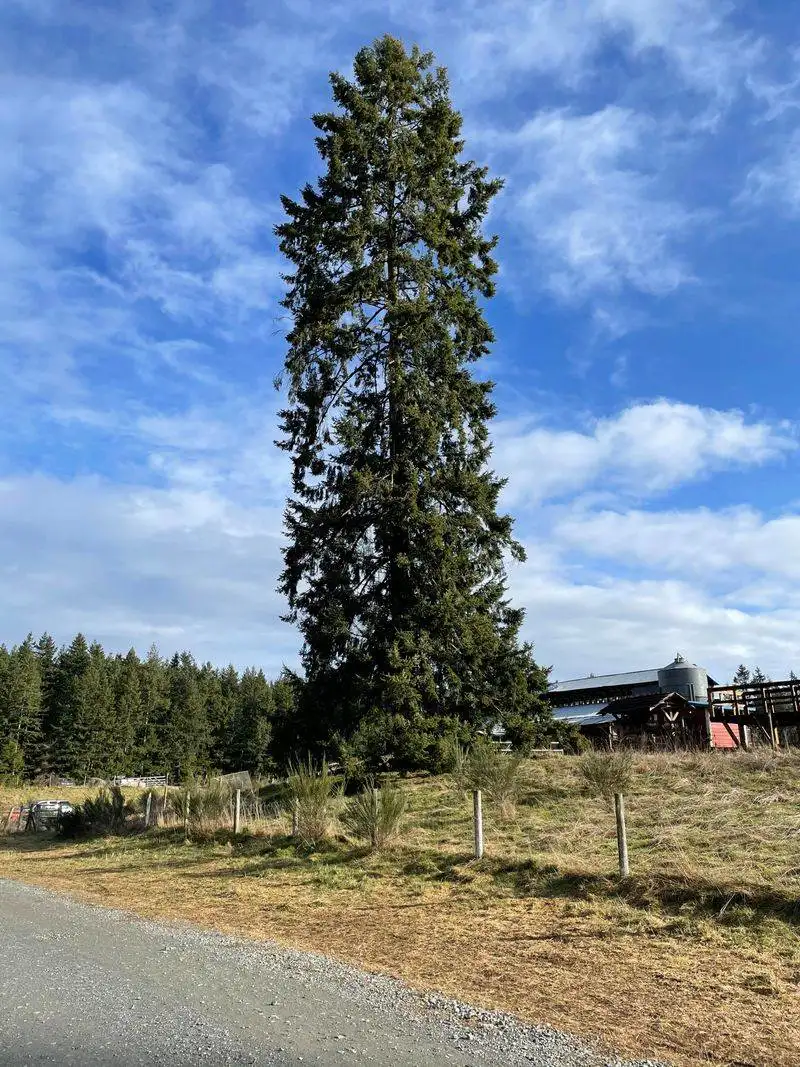
Douglas Fir, towering with its evergreen presence, brings a majestic touch to rocky mountain forests. Known for its resilience, this tree adapts well to varying soil conditions, including rocky terrains.
Its deep green needles and sturdy branches offer a habitat for numerous wildlife species. Douglas Fir is not just a tree; it’s a symbol of strength and endurance.
Did you know? Douglas Fir wood is highly valued for construction due to its strength and durability, making it a significant economic resource in the region.
Quaking Aspen
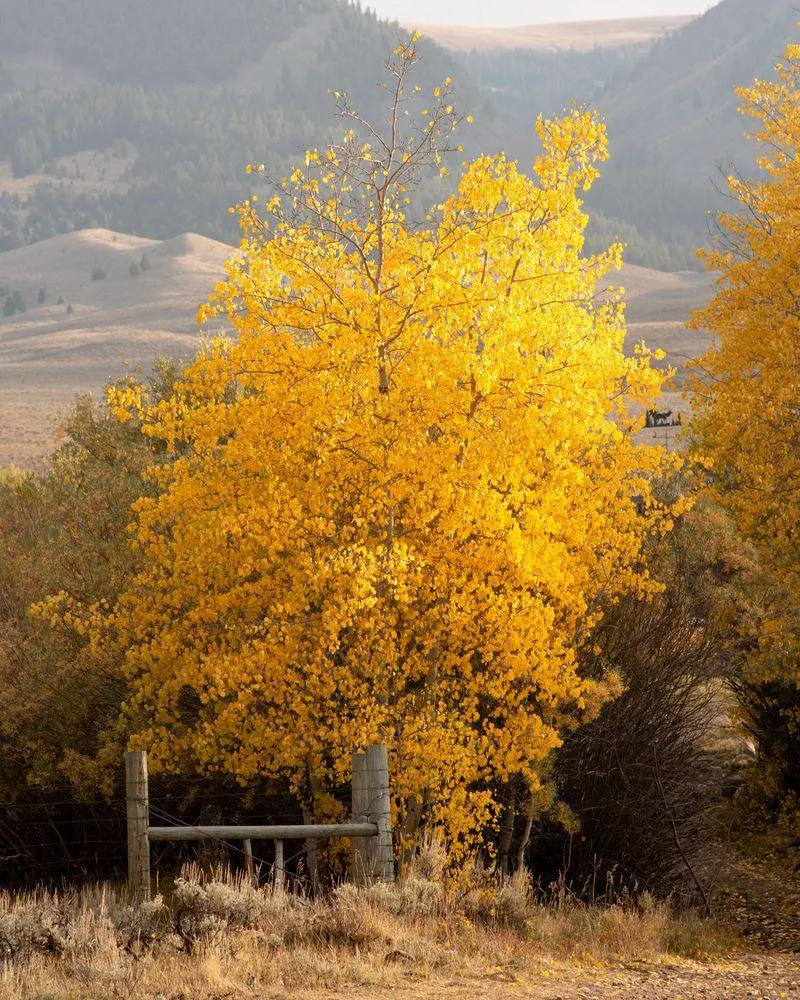
Quaking Aspen, with its shimmering leaves and striking white bark, creates an enchanting scene in rocky mountain groves. The leaves, fluttering in the slightest breeze, add a dynamic quality to the landscape.
This tree’s adaptability to rocky, well-drained soils makes it a favorite among gardeners and nature enthusiasts. Quaking Aspen is more than just a tree; it’s a living testament to nature’s beauty and resilience.
Fun fact: The name “Quaking” comes from the unique way its leaves tremble in the wind, a feature that adds to its allure.
Quirky Cottonwood Cactus
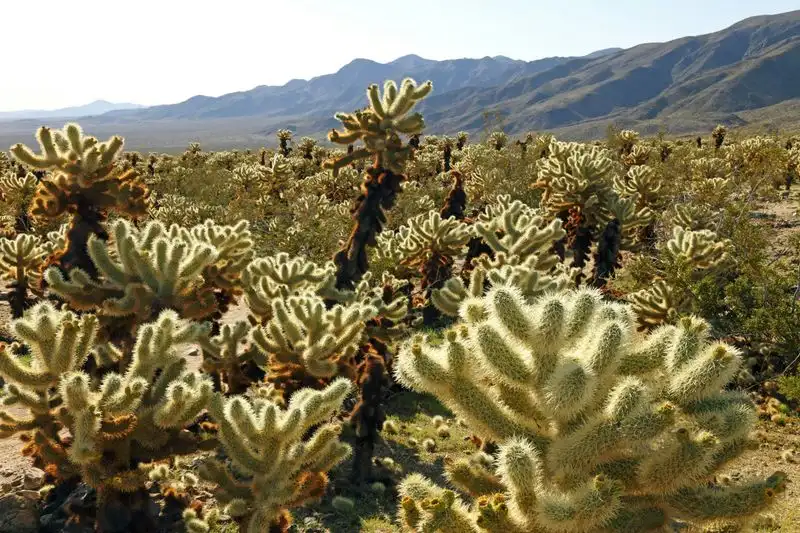
Imagine a shrub that surprises you like a quirky character in a novel. The Quirky Cottonwood Cactus stands out with its unorthodox blend of cottonwood leaves and cactus-like resilience. Its presence in your garden brings both visual intrigue and practicality.
This shrub thrives where others wither, offering a playful dance of shadows and light. The leaves rustle softly, whispering tales of endurance and adaptability. Its sturdy branches can withstand the toughest weather, making it a reliable choice for the unpredictable Rocky Mountain climate.
Fun Fact: This shrub is inspired by the ancient techniques of grafting, a testament to human creativity and nature’s diversity.

